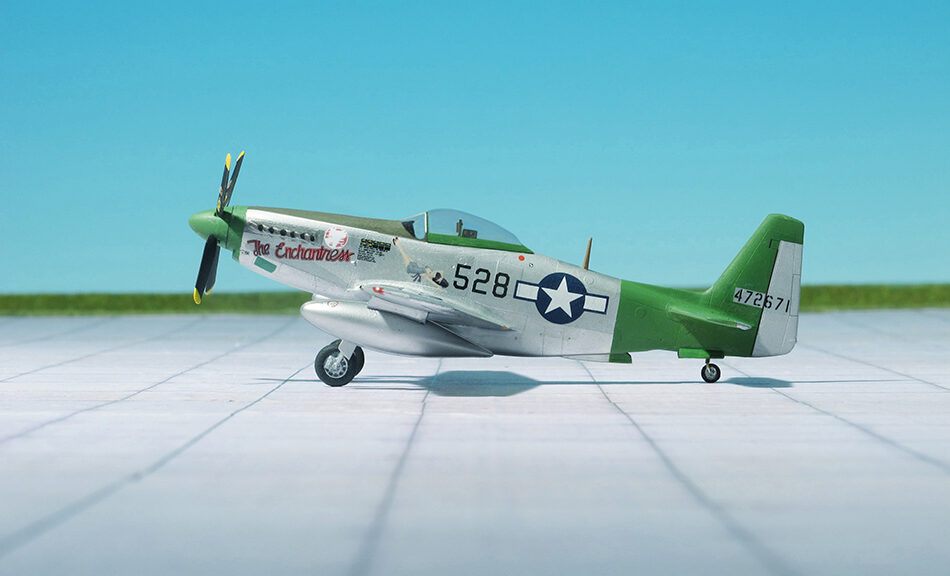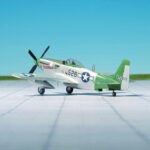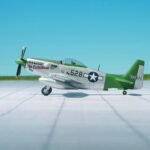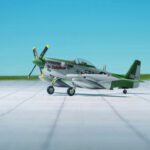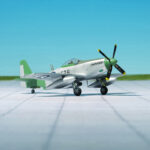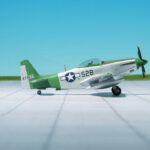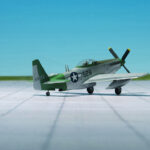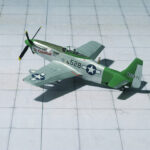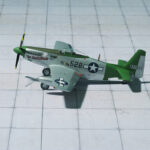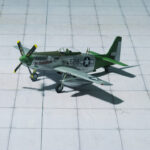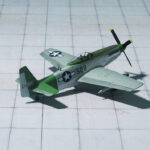TYPE: Long-range escort fighter, fighter bomber
ACCOMMODATION: Pilot only
POWER PLANT: One Packard (Rolls-Royce) V-1650-9 Merlin liquid cooled engine, rated at 2,218 hp
PERFORMANCE: 472 mph at 21,200 ft
COMMENT: The North American Aviation P-51 Mustang was an American long-range, single-seat fighter and fighter-bomber used during World War II. The Mustang was designed in 1940 in response to a requirement of the British Purchasing Commission. The commission approached North American Aviation to build Curtiss P-40 under license for the Royal Air Force (RAF). Rather than build an old design from another company, NAA proposed the design and production of a more modern fighter. The prototype NA-73X airframe was completed on 9 September 1940, 102 days after contract signing, achieving its first flight on 26 October.
Over twenty variants of the North American P-51 Mustang fighter were produced from 1940, when it first flew, to after World War II, some of which were employed also in the Korean Wa and in several other conflicts.
The NA P-51H was the final production Mustang, embodying the experience gained in the development of the XP-51F and XP-51G aircraft. This aircraft brought the development of the Mustang to a peak as one of the fastest production piston-engine fighters to see service.
The P-51H used the new Packard V-1650-9 engine, a version of the Merlin that included Simmons automatic supercharger boost control with water injection, allowing War Emergency Power as high as 2,218 hp. Differences between the North American P-51D included lengthening the fuselage and increasing the height of the tailfin, which reduced the tendency to yaw. Service access to the guns and ammunition was also improved. The canopy resembled the P-51D “bubble” style, over a raised pilot’s position, and the aircraft was given a new propeller with wider, uncuffed blades and rounded tips to allow the additional power to be better used. This propeller was similar to the one used on some later production P-51Ds and the majority of postwar F-51Ds.
With a new airframe several hundred pounds lighter, extra power, and a more streamlined radiator, the P-51H was faster than the P-51D, able to reach 472 mph at 21,200 ft.
The P-51H was designed to complement the Republic P-47N Thunderbolt as the primary aircraft for the planned invasion of Japan, with 2,000 ordered to be manufactured at Inglewood. Production was just gathering steam with 555 aircraft built at Inglewood plant, California, and delivered when the war ended. Additional orders, already on the books, were canceled. With the cutback in production, the variants of the P-51H with different versions of the Merlin engine were produced in either limited numbers or terminated.
Although some P-51Hs were issued to operational units, none saw combat in World War II and, in postwar service, most were issued to reserve units. One aircraft was provided to the RAF for testing and evaluation (Ref.: 24).
